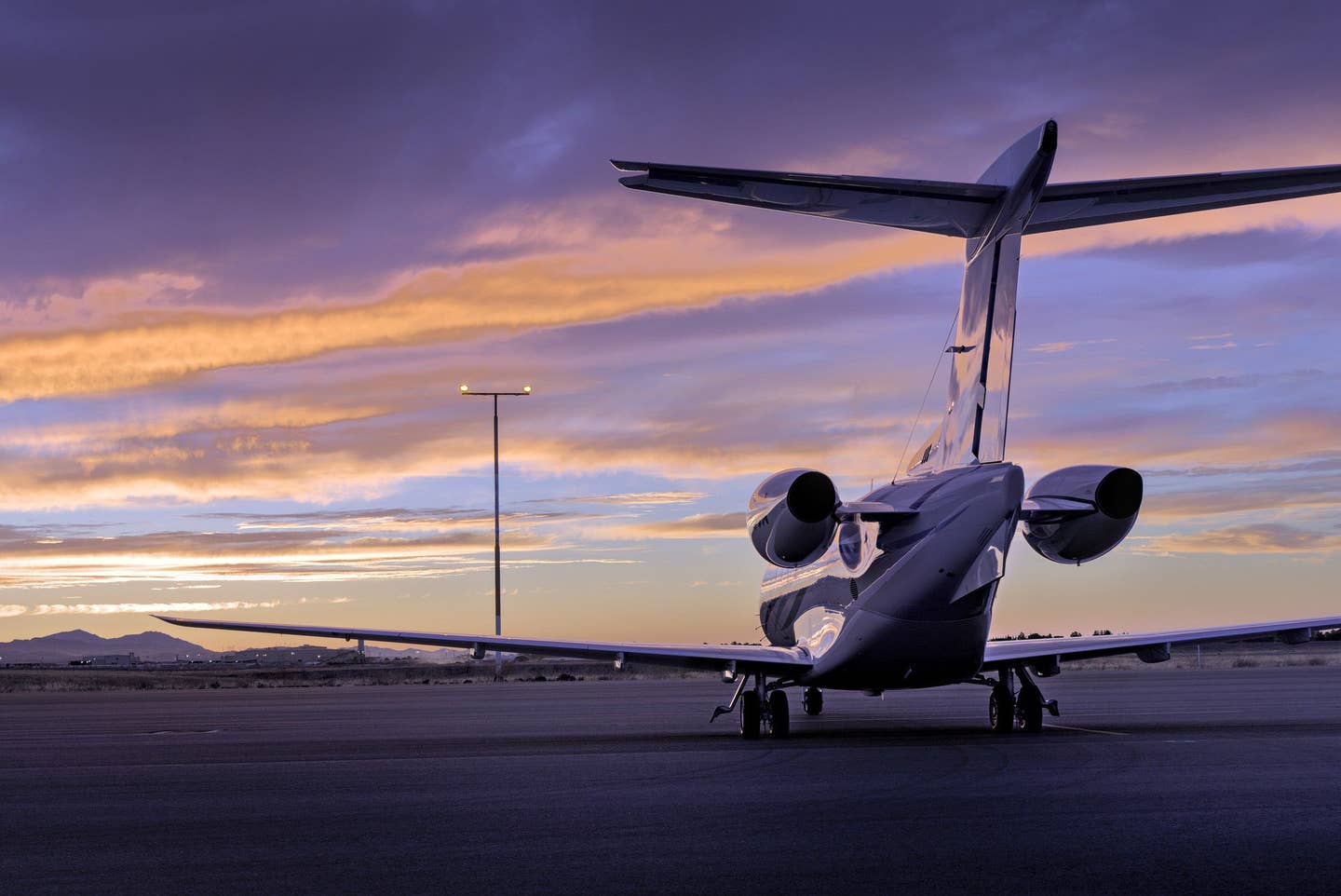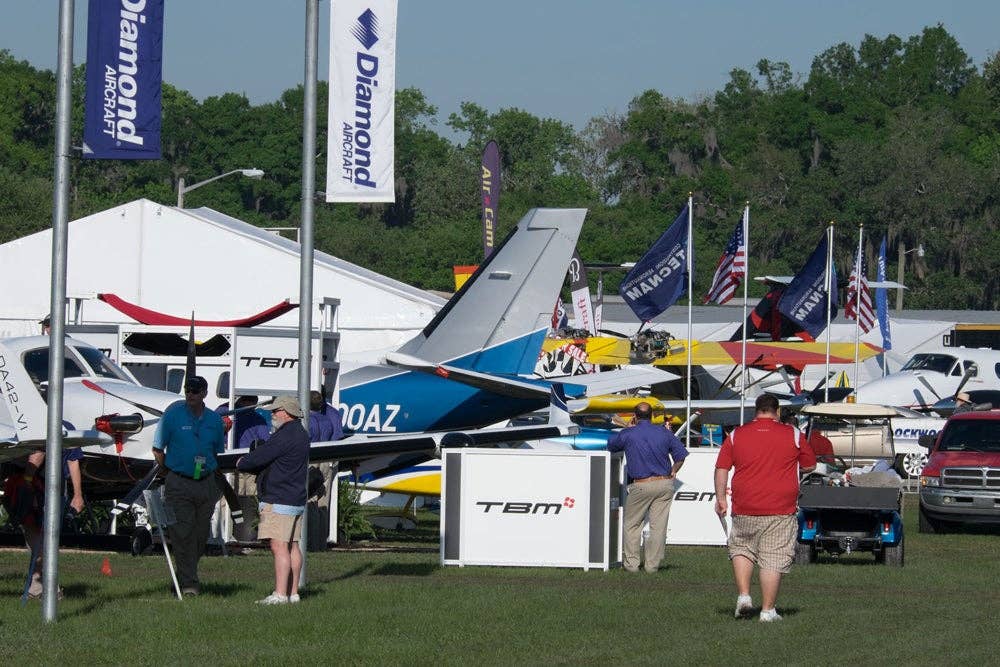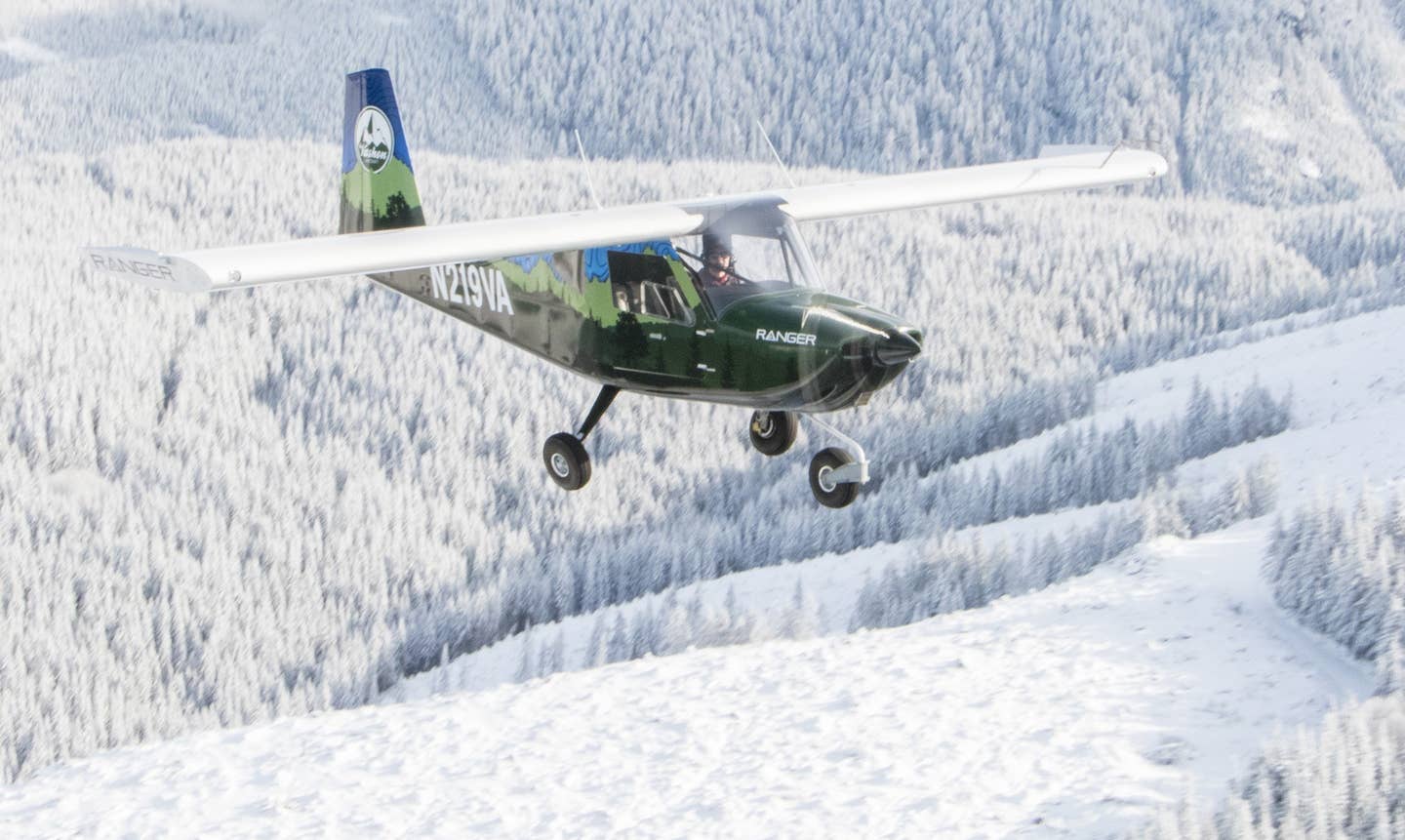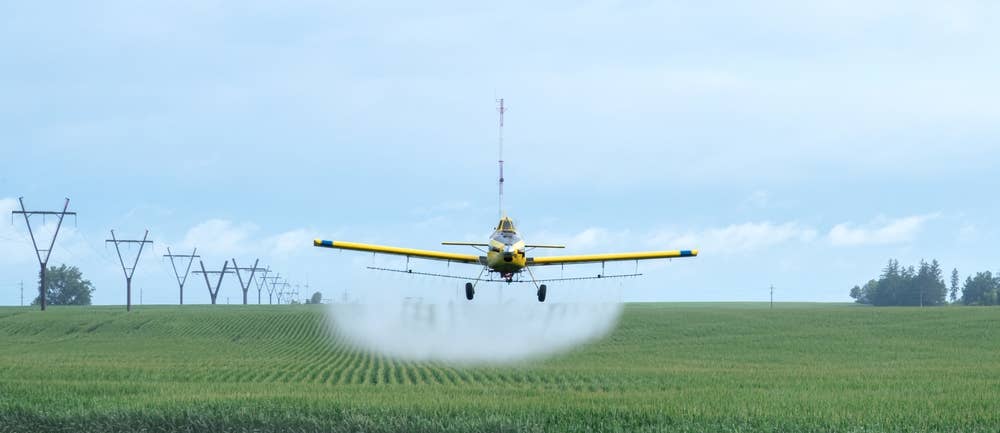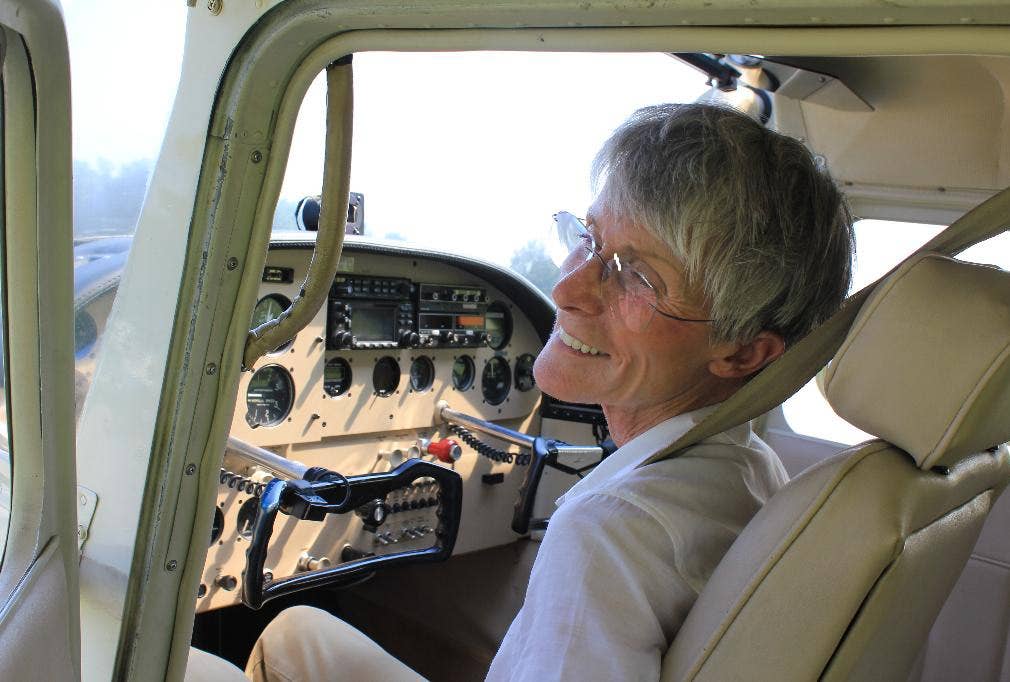
A private pilot and his father-in-law made a 300-mile trip to visit a friend. It was winter. They arrived in late morning. They reported that they had encountered instrument conditions but had been able to drop down below the overcast and continue to the destination, an uncontrolled airport. This must have required some fairly low flying, because the overcast at the time of their arrival hung at 600 feet; but since the entire flight followed an ocean shoreline, navigation would not have been difficult. Visibility under the low ceiling was five miles, and the pilot invited his friend to join them in a short flight to an airport about 50 miles distant for lunch. The friend, not a pilot himself but evidently gifted with a circumspection that pilots often lack, declined on the grounds that the weather did not look very good.
The pilot, proud of his recently acquired Aero Commander 500, invited his friend aboard to show it to him. He started the engines and taxied the airplane to a parking spot. They then disembarked and went to lunch.
During lunch, the pilot said that they were planning to go back that afternoon. His friend tried to dissuade him, suggesting that he remain overnight; but the pilot was determined, and they returned to the airport.
The pilot called for a weather briefing. The nearest reporting station, 40 miles north, called it 800 and three; VFR was not recommended. Local observations along the intended route were similar: ceilings of 600 to 800 feet, visibilities of three or four miles. Clouds were layered up to 28,000 feet. The briefer noted that the clouds forecast were such that it would not just be a matter of getting on top of a stratus layer.
Again, the pilot's friend tried to persuade him to delay his return. The pilot insisted that he had an appointment the next day and had to go back; but eventually he capitulated and agreed to remain overnight. Shortly afterward, however, he became aware that another pilot had just departed, and so he changed his mind again and resolved to be on his way.
The fixed base operator, aware that the pilot was eager to leave, asked another pilot who was getting ready to depart if he would report the flight conditions after takeoff on the unicom frequency. At this point, the AWOS computer at the airport was showing a 500-foot ceiling. The departing pilot confirmed that figure and added that the tops were at 2,000 feet, with another overcast layer at 8,000 and clear skies above that.
Now determined to go, the pilot had the airplane fueled, and he preflighted it. He and his passenger climbed aboard.
The friend watched as the engines started and the Aero Commander taxied away. He could not see the departure end of the runway, but he heard the engines run up and the pilot report over unicom that he was taking off and making a left turn out. The airplane became airborne at midfield and disappeared from view into the clouds over the end of the runway. From the sound of the engines-500s, with exhaust-augmented cooling, are singularly loud airplanes-he could track the progress of the airplane as it turned left and passed by him on the downwind. The engines seemed to go to a higher rpm, and then there was the loud noise of an impact.
Two or three miles from the airport, a hunter heard an airplane approach with engines "screaming." He caught sight of it as it emerged from the clouds, nose-down and inverted, and watched as it crashed behind a screen of trees.
The National Transportation Safety Board's "probable cause" for the accident is the expected one: non-instrument pilot attempts VFR flight in IMC, fails to maintain flight speed, stalls and spins. This broad category of accident-VFR pilot takes off in IMC-is quite common, and it is tempting to lump all of them under the heading of "reckless overconfidence" and leave it at that. To do so, however, is mentally to put all pilots who get into this kind of accident into one category and oneself into another, and therefore to escape serious reflection on how pilots who are perhaps not that different from you or me get into this kind of fix.
The pilot had recently bought the Commander. The airplane was quite old; the airframe had 3,739 hours, the bulk of which must have accumulated back in the 1950s and '60s. The engines had logged only 718 hours when the airplane received an annual inspection, possibly prior to sale, in August of 1999; they had last been overhauled 33 years earlier. Static system and transponder checks required for instrument flight had last been performed in April, 1998. The Commander's Hobbs meter (which accumulates time more quickly than the engine hour meters on the tachs do) showed 44.1 hours of flight between the August annual inspection and a November 28th maintenance visit.
The pilot's multiengine rating had been issued on December 4; the accident occurred 18 days later. Prior to his last flight, he had logged 75.9 hours of multiengine time, 69 of those in the Aero Commander. Only 28.5 hours in the Commander were logged as pilot-in-command time, leaving a generous 40.5 hours of dual. The NTSB's accident report states, confusingly, that the pilot logged 3.5 hours of dual instrument time in the Commander on October 7 and 9 but that his "first recorded flight" in the airplane was on November 13th. Perhaps this means his first recorded flight as pilot in command. He had also logged 3.6 hours of simulated instrument time in 1996, possibly in connection with his initial flight training; no other instrument experience is noted. The pilot's total time was about 570 hours.
Although the airplane was demolished in the crash-the first 15 feet of the fuselage were crushed, and one engine was buried three feet under ground-the investigator found no evidence of a mechanical malfunction that could have caused the accident. Both vacuum pumps were apparently functional, and the propellers were turning and the engines delivering power at impact. All of the flight instruments were destroyed, and so it was impossible to tell whether gyro failure could have been a factor.
The NTSB evidently did not interview the pilot's instructor regarding the level of his instrument ability. It would seem that a pilot who could do any instrument flying at all ought to be able to keep an airplane upright and above its stalling speed while climbing through a 1,500-foot-deep stratus deck. But there is something about a VFR pilot climbing through a stratus deck that is conducive to a stall-spin. The pilot is desperately eager to pop out into clear air on top. Seeing bright spots above him, he instinctively urges the yoke back to make his climb steeper. His attention is outside the airplane, but he has no horizon reference. The witness reports of a change in the prop note and of the engines "screaming" is consistent with the pilot's pushing the props to flat pitch in an effort to achieve a maximum angle of climb.
That is at least a possible interpretation of the pilot's apparent loss of control of the airplane. The other aspect of the case, however, is his decision-making process. The pilot's desire to show off his impressive new airplane may have been a factor in his deciding to make the flight in the first place. He may have known before departing in the morning that there was a possibility of the weather being as bad as it turned out to be along his intended route; but he may have felt, as VFR pilots invariably do, that he could safely "take a look," and if the weather turned out to be too bad he could turn back homeward.
The trouble with taking a look is that you're usually so deep in the weather before you decide to give up that retreating is just as difficult as continuing. But in this instance the pilot safely reached his destination and, in fact, considered the trip sufficiently unremarkable that he was prepared to resume it just to go to another airport for lunch.
The pilot's vacillation over returning reveals how difficult and ultimately arbitrary such go/no-go decisions can be. He has an appointment; well, no, he will stay; well, no, another pilot took off, why not me? There is hard evidence on which to base a decision: there is IMC along the route, and the briefer has said the words "VFR not recommended." For some pilots, this would be a sufficient deterrent even if the sun were shining in a clear sky at the departure airport. But once a pilot has decided that he can outsmart the system, and has successfully done so one or more times, the decision becomes far more difficult to make.
As often happens, several factors combined to cause an accident. It is possible-even likely-that the pilot could have gotten between layers and successfully made his way toward better weather to the south. To do so would have been illegal, but illegal is not necessarily fatal. The decision to fly merely put him and his passenger at risk; it was a subsequent error of flying technique-a seemingly minor error, and one that would probably not have occurred at all in clear weather-that sealed their fate.
This article is based solely on the National Transportation Safety Board's report of the accident and is intended to bring the issues raised to the attention of our readers. It is not intended to judge or to reach any definitive conclusions about the ability or capacity of any person, living or dead, or any aircraft or accessory.

Sign-up for newsletters & special offers!
Get the latest FLYING stories & special offers delivered directly to your inbox

